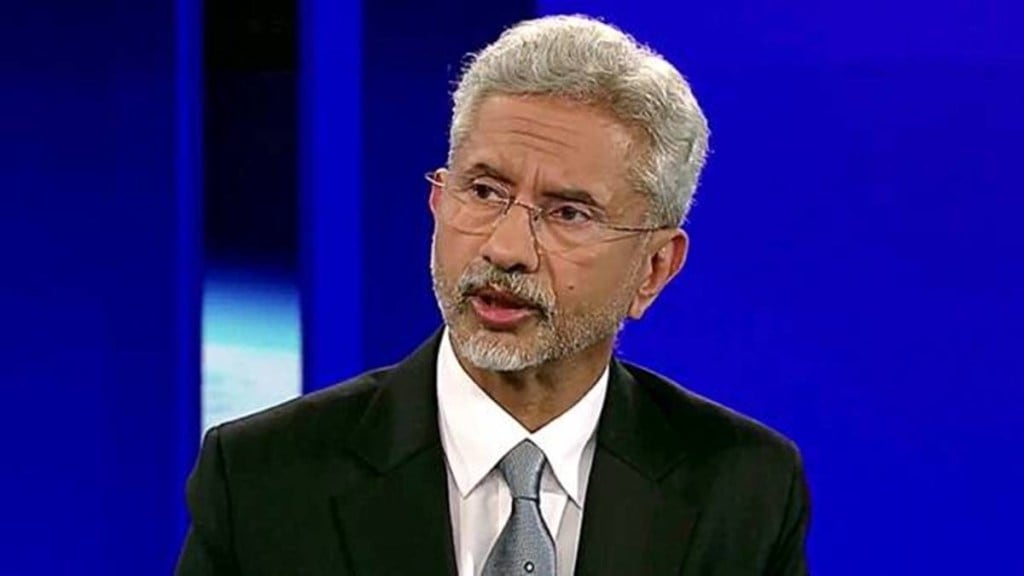External affairs Minister Dr S Jaishankar is on his way to visit African nations South Africa and Namibia where the focus is going to be on strengthening bilateral cooperation in various sectors.
The minister is traveling to these two countries from June 1-6, 2023 and his first stop is South Africa where he will participate in the BRICS Foreign Ministers meeting which will take place in Capetown. And later he will hold bilateral meetings with his South African counterpart Ms Naledi Pandor and will call on President of South Africa, Cyril Ramaphosa. This year South Africa is holding the presidency of BRICS.
According to an official statement issued by the Ministry of external Affairs, Jaishankar is also expected to hold bilateral meetings with other member countries of the BRICS – Russia and China and also `Friends of BRICS’ ministers. Before leaving for Namibia, the minister will meet with the Indian Diaspora in Capetown.
In the second leg, in his first ever, the minister will be in Namibia from June 4-6 where he will co-chair the inaugural Session of the Joint Commission Meeting with the Namibian Deputy Prime Minister/ Foreign Minister, Netumbo Nandi-Ndaitwah. And will meet the top leadership of the country as well as other ministers in the African nation and interact with the Indian Diaspora.
China has been developing its engagements in the African continent and has been investing in natural gas and oil, mining and infrastructure sectors for several years.
To give a boost to India-Africa relations the government has approved opening of almost 18 new missions in the region between 2018-21. And has expanded its presence in the continent through various programmes including capacity building, education, healthcare, and training.
India-South Africa
Financial Express Online has reported earlier that in Asia, India is South Africa’s sixth largest trading partner, growing steadily from US$4.7 billion in 2007 to close to more than US$10 billion at present.
In an effort to making this medication affordable for the millions affected in South Africa, a few years ago in a short documentary screened by the Ministry of External Affairs (MEA) a leading pharma company Cipla, was the first company to offer anti-retroviral drugs (ARV) – drug therapy for HIV – at US$1 (Rs 68) per day. Another major pharma company Ranbaxy, has established a second manufacturing facility, by investing almost US$30 million to make basic analgesics, vitamins, other over-the-counter medication and antihistamines.
Both sides can collaborate on vaccine production, medical research, and healthcare infrastructure development. Sharing knowledge, best practices, and resources can benefit both nations and the wider African continent.
Besides BRICS, South Africa is also active in several multilateral organizations including the IBSA Forum (India, Brazil and South Africa), the Indian Ocean Rim Association for Regional Cooperation (IORARC) and the New Asia-Africa Strategic Partnership (NAASP). By aligning their positions on global issues, India and South Africa can jointly advocate for a more inclusive and equitable international order.
And to attract foreign investments, South Africa has offered special incentives for its Special Economic Zones. Both India and South Africa can collaborate in various sectorssuch as information technology, pharmaceuticals, renewable energy, manufacturing, and agriculture. The two countries can foster collaboration in science and Technology, share expertise in areas like biotechnology, space technology, healthcare, and sustainable development.
India and South Africa can enhance collaboration in the field of counterterrorism, intelligence sharing, and security cooperation. This partnership can contribute to the overall security and stability of the region and help combat transnational threats effectively.
India and Namibia
After South Africa, India is the second largest exporter to Namibia. And pharmaceutical and healthcare sectors have emerged as key areas of cooperation between the two sides. It is known India was among the first countries to provide Covid-19 vaccines, PPE kits, and other medical supplies during the pandemic.
The African nation is rich in rare earth resources like diamonds, copper, zinc and uranium. Since it has significant deposits of uranium. India, with its increasing energy demands, seeks access to uranium reserves to ensure a stable and sustainable energy supply. Reports in the public forum indicate that in 2016 during former President Pranab Mukherjee’s visit to Namibia, India was informed that legal implications of supplying uranium for peaceful civilian nuclear use were being studied.
Namibia is a signatory to the Treaty of Pelindaba on the African Nuclear-Weapon-Free Zone, and India is a non-signatory to the Non-Proliferation Treaty (NPT). Therefore no uranium exports to India have materialized so far.
Namibia presents economic opportunities for Indian businesses. The two countries engage in trade, investment, and technology transfer across sectors such as mining, agriculture, infrastructure development, and pharmaceuticals.
India provides scholarships and training programs to Namibian students and professionals, contributing to the development of human resources in Namibia. This cooperation enhances educational ties and promotes people-to-people exchanges between the two nations.
Maritime Security
With its strategic coastal location, Namibia plays a crucial role in ensuring maritime security in the region. India, as a rising global maritime power, values collaboration with Namibia to maintain stability, combat piracy, and safeguard trade routes in the Indian Ocean.

